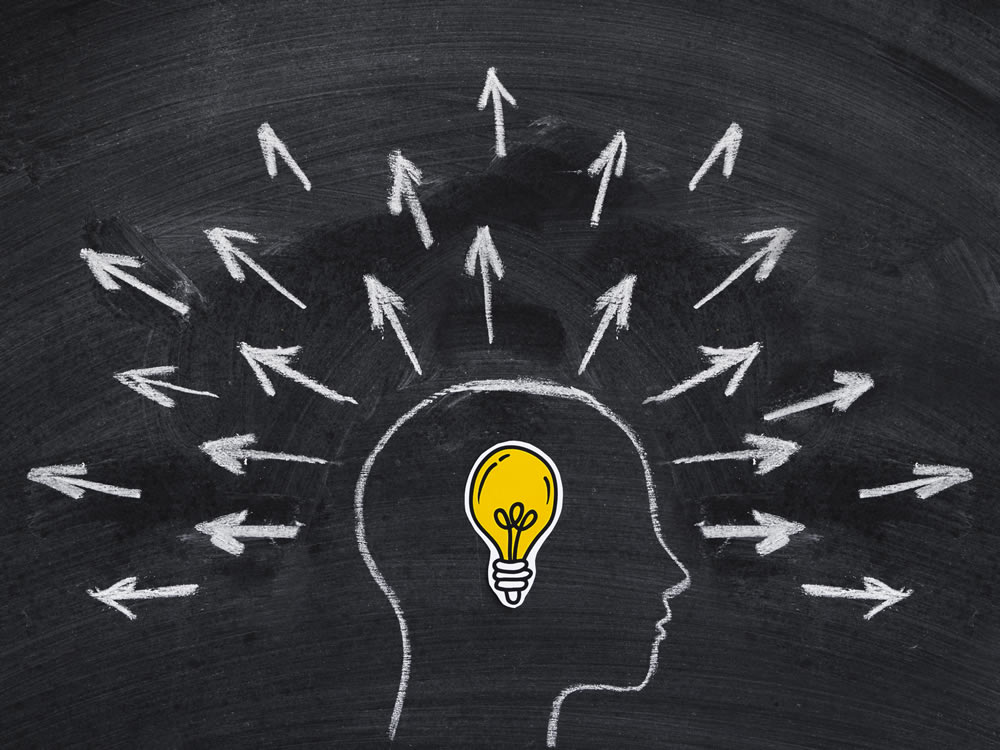In our modern life, the most common combination of what we do is work, behavior, and social patterns. In these areas, it is important to be able to make decisions and solve problems to be successful in both personal and professional life.
Have you ever counted how many problems you encounter during the day or week? It can be just basic things like a broken plate after breakfast or more professional tasks like business planning and managing the team.
Two major thinking methods that have gained significant attention in recent years are critical thinking and creative thinking. And truly speaking, these two types are often considered to be opposites. Creative thinking and critical thinking are both needed for effective decision-making and problem-solving. So let’s see how to find the balance between them and what are the main differences between critical thinking and creative thinking!

Critical Thinking
Before we proceed to understand how to find the balance in your lifestyle and work as well, it is important to understand what critical thinking actually is. So it is the type of thinking about any subject, problem, or content.
Moreover, it can improve the quality of your thoughts. Critical thinking will let you make decisions by yourself. In this way, it will help you improve decision-making. It is about asking quick questions and giving quick answers to understand the situation.
There is a huge amount of information we meet every day which needs to be analyzed in order for us to make knowledgeable decisions on it. Critical thinking is an invaluable skill that allows people to think logically and systematically.
This thinking helps analyze information or ideas by breaking them down into smaller components with a view to determining their relevance and completeness. It allows people to question the beliefs and arguments of others, using logical reasoning to come up with good decisions. It can be named as a methodical process that involves analyzing several different sources of information, weighing up information and deductions, and making an informed opinion from them on available facts at hand.
Components of Critical Thinking
Now, it is important to understand what the critical thinking process consists of. According to experts, critical thinking should have:
- Interpretation – meaning or significance of something. This component includes reviewing data through relationships between different groups and making conclusions based on available information while identifying patterns or trends, among other things.
- Analysis – separating complex information into smaller parts to examine their relationships and distinctions. This component refers to evaluating the presented information and identifying any underlying beliefs and arguments presented along with any potential predispositions or errors.
- Evaluation – it is about assessing the strength and validity of presented arguments. Weighing up the evidence presented, evaluating the credibility of sources is a part of this component.
- Explanation. It provides good reasons for the reached conclusion. This component means presenting analytical and assessed findings in a brief format.
- Self-regulation. This component requires one to be aware of one’s discriminations and beliefs, which should be challenged by searching for more information.
Examples of Critical Thinking
As we mentioned, critical thinking helps analyze one question from different sides and then make reasonable decisions. Maybe the most simple example is distinguishing fake news from real news. A person who has critical thinking always does their own research on any problem or idea. This person isn’t satisfied with other people’s opinions, and it is good for them.
So critical thinking is useful in different spheres of life including education, medicine, law, business, and so on. Let’s check some situations, where this type of thinking is applicable.
- Imagine you visit a doctor. The doctor checks your test, analyzes patient’s symptoms, and makes a diagnosis depending on available information. It is also about critical thinking, where you need to analyze different aspects of human health and prepare a conclusion without blood analysis and so on, if possible.
- The next example is a lawyer. A lawyer uses critical thinking in assessing the validity of witness testimonies, weighing down arguments to build a case to protect their client.
- To make a lesson plan that encourages students to think critically, a teacher must use critical thinking, analysis and research, making conclusions from available information on hand and the ability to effectively write plans.
- A business manager who understands market trends and customer preferences through critical thinking can analyze market trends, assess customer preferences, and then make reasonable and effective decisions based on the available data as well.
- A student needs critical thinking when writing papers to ensure a logical structure. Otherwise, such a paper will be chaotic.
So it is important to note that people with good critical thinking skills are able to take in mind some facts before making decisions. And in this way, they can be objective in decisions and findings because they researched the problems from all sides.

Understanding Creative Thinking
Creative thinking is considered one of the key skills of the 21st century. And actually, all enlightened people talk about the importance of its development. It is a complex idea that includes many different aspects. So creative thinking is the creation of unusual and good solutions to the original problem. This definition breaks down the creative thinking process into two stages: creating unusual solutions and choosing solutions that are good enough to deal with the problem.
So creative thinking is the process of generating new ideas, possibilities, or solutions that are original and, in the same way, useful. It is about going away from traditional ways of thinking and finding alternatives. Even if your expertise in the field isn’t skyrocketing, it is possible to achieve excellent results. People tend to think of creative abilities as something that is important only to people in creative professions like musicians, photographers, designers, etc. But in the modern world, the ability to think creatively is one of the most important skills for many specialists. Moreover, employers often try to find people who can think creatively and critically.
Components of Creative Thinking
- Fluency – It is about generating a lot of ideas easily and well. How can we find something that we need? The more ideas our brain generates, the more likely we can find something interesting for the situation.
- Flexibility – As you know, flexibility means finding new perspectives and opportunities. It is important to be willing to consider ideas and opinions that are new or different from your own; it is all about flexibility.
- Association – It is about the connection between new concepts and ideas that didn’t seem to be relevant in this way.
- Originality – It is like the power of independent thought or constructive imagination. You can change tools, environments, and maybe settings to improve your originality.
Examples of Creative Thinking in Real Life
As you already know, we use creative thinking in different spheres of your life. It can be science, art, design, and so on. So let’s look at some examples:
- A Java developer is coding new software, while a UI and UX designer is working on user-friendly interfaces.
- An artist drawing a new picture. They use new materials and styles to create something special and modern.
- The pastry chef came up with a new dessert – a heart-shaped cake with a watermelon flavor. It is something new, yeah? And it is all about creative thinking.
Creative thinking is a powerful tool for our professional and personal lives. It helps us understand how to unlock our possibilities and use them.

Conclusion: Why is it important to Balance Critical and Creative Thinking?
According to experts’ opinion, these two modes of thinking are important in work. Integrating both critical and creative thinking helps in problem-solving and decision-making. Also, having analytical and creative thinking boosts your possibilities. Finding non-traditional ideas is key to success. For example, by using creativity, teachers can engage more students with lesson topics. If it is interesting enough, more students will be successful in this subject or topic.
These types of thinking must be balanced to increase productivity, improve communication abilities, and develop more creative and efficient ways of dealing with problems.










